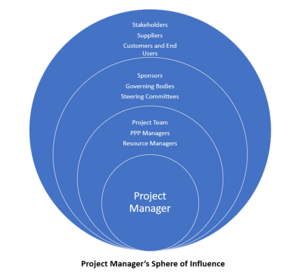The dynamics of adversarial relations
The attempts by clients to manage the problem of moral hazard and to reduce the scope of opportunistic behavior by the contractor have the tendency to generate vicious circles of adversarial behavior between parties.[1]. The dynamic of adversarial relations created by the client's desire to get the 'best deal', can generate an escalation of the transaction costs while the costs of production seem to be pushed down. [2].
Contents |
History
The emergence of general contracting in Europe is associated with the housing crisis following World War II while in Britain this happened much earlier, during the first half of the 19th century after the civil war and the rebuilding of London after the great fire. A shift to 'contracting in gross', where a single contractor undertook the financial responsibility in a single contract for the entire work, had to be done because of the urgency in the building program. This required the development of a system of measurement, removed the master craftsmen from direct contact with the architect while the architects were required to produce complete designs before tender.[3].
In civil engineering this trend had a similar outcome in the adoption of the professional system. The building of infrastructure, like roads, railways and canals, was supported by private investments. The private promoters were sometimes landowners or other interested parties but in the railway sector they were mostly engineers. In the beginning, the works were divided into small lots who were built by local contractors, closely supervised by the engineers.
But during the 1st half of the 19th century, the role of the general contractor who took on a broader responsibility for the works emerged. Contractors increasingly took over the promotion task, raising the finance for speculative new lines while the momentum of railway building grew. The financial crisis of 1873, that triggered a depression in Europe and North America from 1873-1879 and even longer in some countries, took away much of the competitive advantage of the promoter-contractors. Clients became increasingly public authorities, while banks preferred to lend to governments and established companies rather than finance speculative projects the consulting engineer became more important, the enterprise increasingly took the form of the civil engineering contractor of today. [3].
The important feature of this new system was the general contractor undertaking work conceived by others which could be subject to an independent control. It was for the first time that the client could effectively transfer some of the risks inherent in the construction process to an project actor. The rise of the general contractor pushed those not included within its scope, to organize themselves on a professional basis.
The dynamic relationship between the professionals and the contractors was part of a more general trend in the mid 19th century, from a society dominated by entrepreneurial ideal towards the beginnings of a society dominated by the professional ideal.[3].
The development of the professionally organized consultant architect or engineer reimbursed on a fee basis, and the evolution of third parties as control actors responsible for regulating those activities that remained subject to market forces, was driven by the insulation of the activities facing highest uncertainty. The system that emerged in the 19th century is defined as the professional system.
The problem with the professional system
At its best, the professional system delivered high quality buildings, but delivered them slowly and expensively. As it was put under increasing pressure, its strengths became into weaknesses. By the 1960s, the professional system had become 'an establishment' more concerned with protecting its own interests than meeting client needs.
It was allocating roles, defining responsibilities, specifying liabilities and crucially, it was establishing the reward and penalty structure for the actors in the construction industry. The principal problem generated by this establishment was the double dynamic of adversarial relations and over-engineering.[1].
The dynamic of adversarial relations and over-engineering

References
- ↑ 1.0 1.1 1.2 Winch, Graham M., Wiley-Blackwell, (2010) "Managing Construction Projects, 2nd edition "
- ↑ Curtis, B., Ward, S. and Chapman, C., CIRIA, (1989) "Roles, Responsibilities and Risks in Management Contracting "
- ↑ 3.0 3.1 3.2 Winch, Graham M., Routledge, (2014) "Institutional reform in British construction: partnering and private finance "